In VXLAN EVPN control plane, as you know, MAC addresses are advertised and learned between leaf switches via MP-BGP protocol, which make it possible to learn MAC addresses in the control plane. MP-BGP has some specific route types for the EVPN address family, which makes the VXLAN EVPN technology to work. In this video we have an overview of some of these route types. We get to know, in detail, the most popular route type, route type 2, which is for L2 connectivity. we will also introduce other route types but we learn them in detail during the course and in the next videos.
in the last videos, we have learned what is vxlan evpn and also leaf and spine architecture
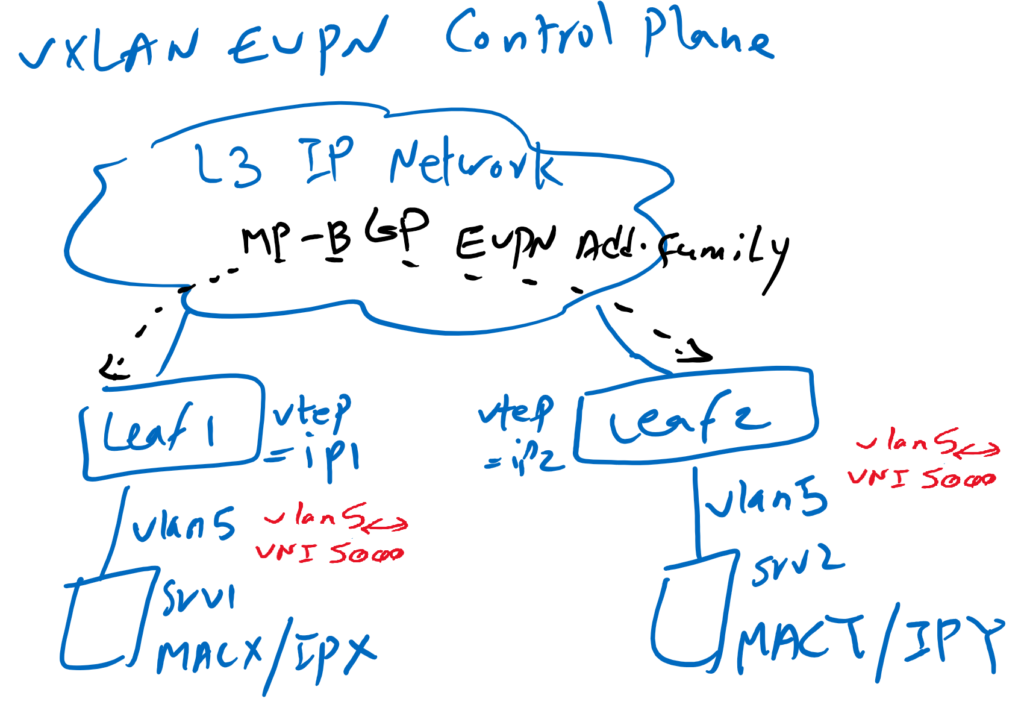
VXLAN EVPN Route Type 2
The most important MP-BGP route type in EVPN Address Family is route type 2 which advertise the MAC and IP of endpoints between leaf switches with their VLAN identifier which is called VNI in VXLAN Network.
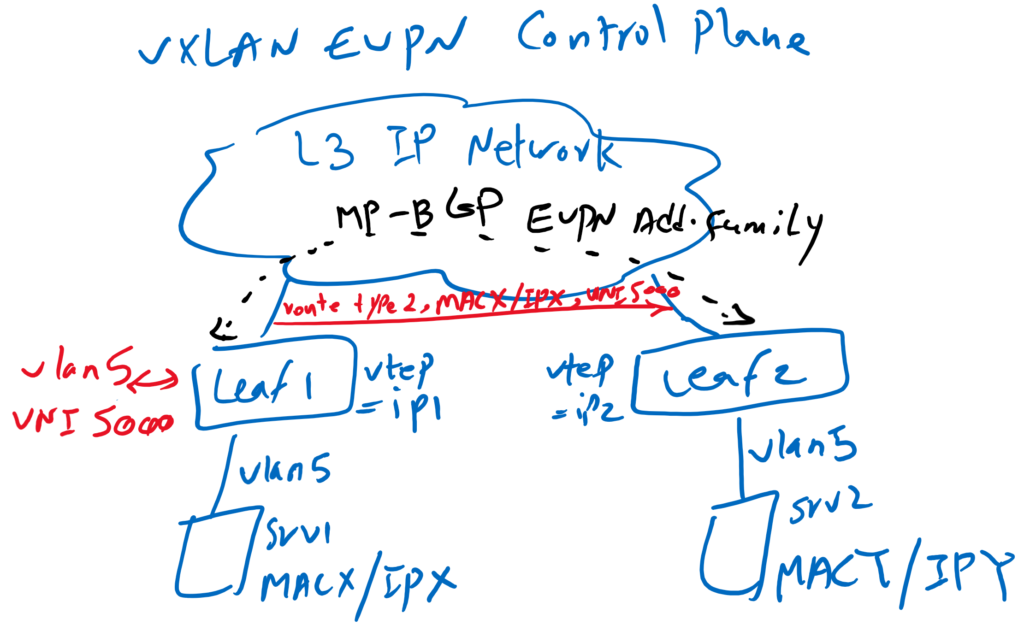
As you see in the topology, we have two server with MACX/IPX and MACY/IPY connected to Leaf1 and Leaf2 switches. Both servers are in the same VLAN (VLAN 5) and VLAN 5 is already mapped to VNI 5000 in VXLAN network. MP-BGP Protocol with EVPN Address family is already configured between these two leaf switches.
The most important information advertised in route type 2 is the MAC address, IP address and VNI identifier of the endpoints, which allows leaf switches to learn endpoints connected to other leaf switches so that L2 -Connectivity between endpoints in the same VNI becomes possible.
VXLAN EVPN Route Type 2 Fields
If we take a closer look at the information advertised via route type 2, besides MAC, IP, and L2 VNI, there is also some other information that is advertised via route type 2.
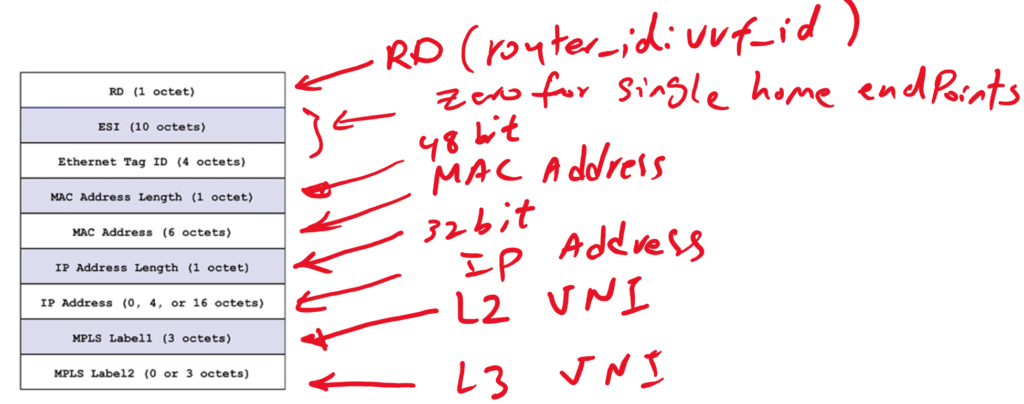
L3VNI in Route Type 2
L3-VNI, which is intended for inter-VXLAN routing and it differs somehow from inter-VLAN routing in native Ethernet. We’ll talk about inter-VXLAN routing in the next few videos.
RD in MP-BGP
In addition, RD is prepended to any route advertised in MP-BGP. RD is used to make addresses in different VRF or different tenants, unique, if they are overlapped. For example, suppose that two endpoints on the same leaf switch belong to two different VRFs but have the same IP or MAC address. When advertised through BGP, RD is prepended to make them unique.
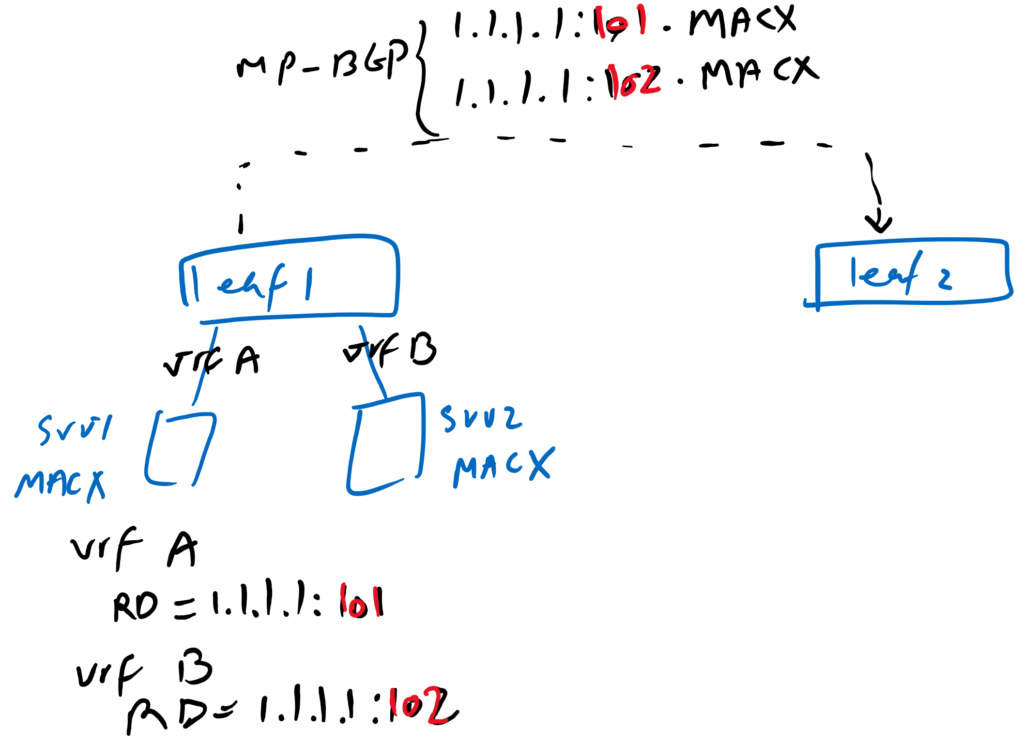
RD must be unique for each VRF in a particular leaf switch. if it is generated automatically, then “ROUTER-ID: VRF-ID” is assigned as RD to each VRF, which makes overlapping MAC and IP to be unique when advertised through MP-BGP. In this topology, both servers in VRF A and VRF B have the same MAC address. RD for each VRF is automatically assigned with the mixture of ROUTER-ID and VRF-ID. When MAC/IP is advertised over BGP, RD is prepended to each route, making the route to become unique.
RT in MP-BGP
In addition to RD, RT is also advertised as a community in the MP-BGP EVPN address family. When receiving a route via BGP, RT is used to identify which VRF, the route needs to be imported into. RT export and RT import are configured in each VRF. When advertising via BGP, the RT export is attached to the route. If the RT attached in the receiving route matches the Import-RT configured in a VRF in Egress Leaf-Switch, the route will be imported into that VRF. RT for each VRF can be automatically assigned with the mixture of “AS:VNI”.
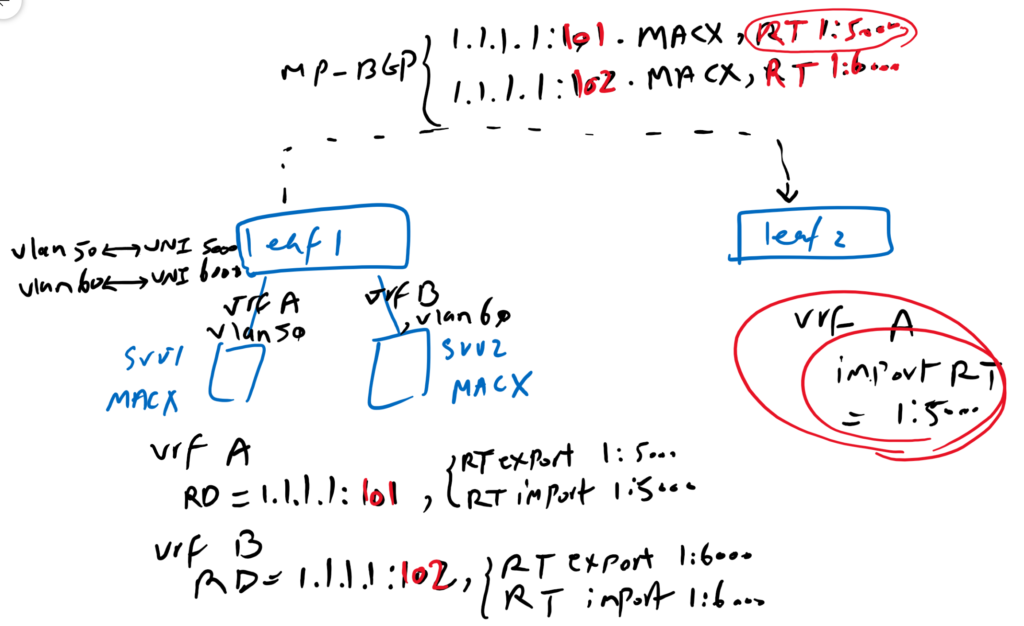
Without considering the configuration of VXLAN EVPN, which we will see in the next videos, we can check an example BGP EVPN route type 2 with the command “show bgp l2vpn evpn”.
leaf1# show bgp l2vpn evpn
BGP routing table information for VRF default, address family L2VPN EVPN
BGP table version is 409, Local Router ID is 192.168.0.11
Status: s-suppressed, x-deleted, S-stale, d-dampened, h-history, *-valid, >-best
Path type: i-internal, e-external, c-confed, l-local, a-aggregate, r-redist, I-i
njected
Origin codes: i - IGP, e - EGP, ? - incomplete, | - multipath, & - backup, 2 - b
est2
Network Next Hop Metric LocPrf Weight Path
Route Distinguisher: 192.168.0.11:32907 (L2VNI 50140)
*>i[2]:[0]:[0]:[48]:[000c.29a9.8a1a]:[0]:[0.0.0.0]/216
192.168.15.13 100 0 i
*>l[2]:[0]:[0]:[48]:[0050.56b1.4f84]:[0]:[0.0.0.0]/216
192.168.15.11 100 32768 i
*>i[2]:[0]:[0]:[48]:[000c.29a9.8a1a]:[32]:[172.21.140.20]/272
192.168.15.13 100 0 i
*>l[2]:[0]:[0]:[48]:[0050.56b1.4f84]:[32]:[172.21.140.10]/272
192.168.15.11 100 32768 i
Route Distinguisher: 192.168.0.13:32907
*>i[2]:[0]:[0]:[48]:[000c.29a9.8a1a]:[0]:[0.0.0.0]/216
192.168.15.13 100 0 i
* i 192.168.15.13 100 0 i
* i[2]:[0]:[0]:[48]:[000c.29a9.8a1a]:[32]:[172.21.140.20]/272
192.168.15.13 100 0 i
*>i 192.168.15.13 100 0 i
VXLAN EVPN Route Types overview
There are also some other route types in VXLAN EVPN that make VXLAN EVPN more efficient and more applicable. Let’s Just have a review for some other route type that will learn in detail in the next videos.
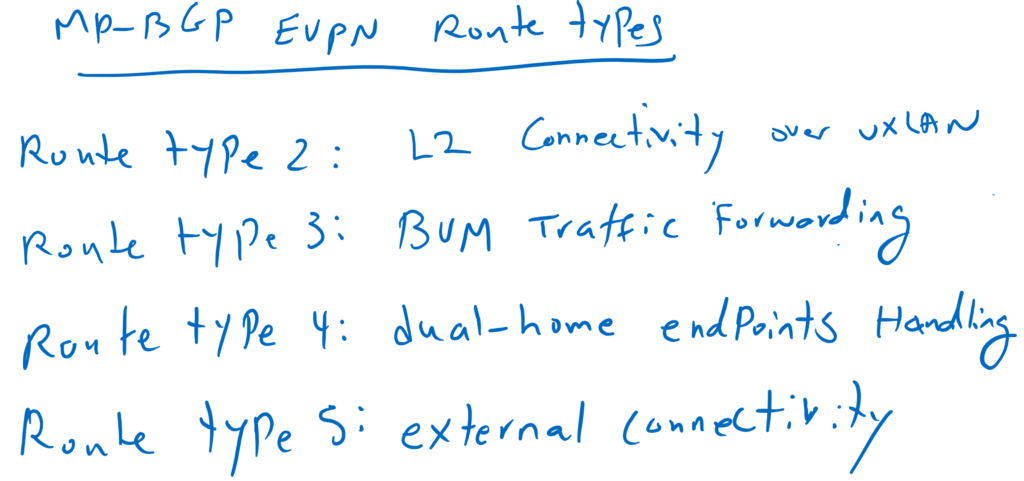
Route type 3 is used to forward BUM traffic more efficiently in VXLAN network. BUM traffic is broadcast, unknown unicast, and multicast traffic. We’ll talk more about route type 3 and BUM handling in a specific video.
Route type 4 is mainly used for dual-home endpoints that are connected to two leaf switches for redundancy reasons. We will talk more about route type 4 for providing redundancy in access switches in a specific video.
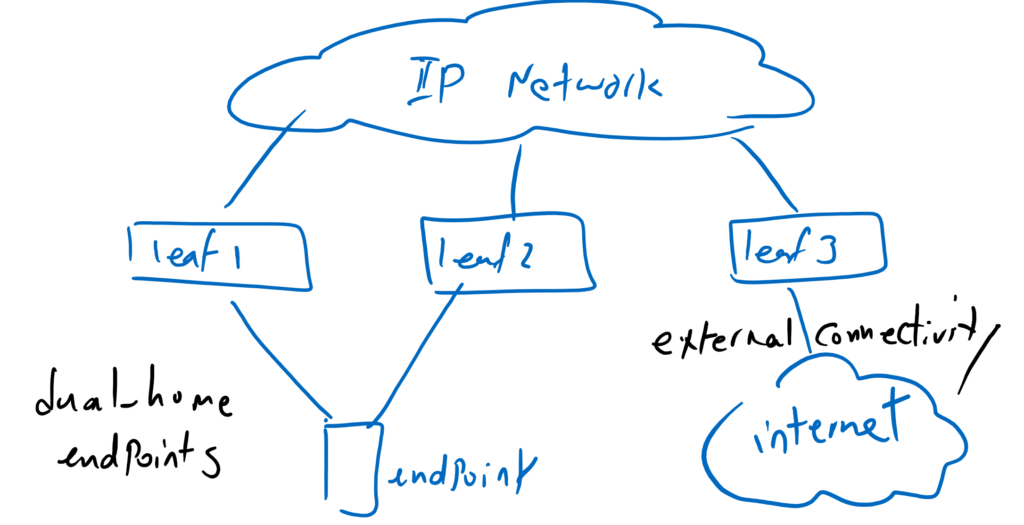
Route type 5 is mainly used to redistribute external IP prefixes into VXLAN network. It enables communication between endpoints in VXLAN network and external networks such as LAN, WAN and Internet. We’ll talk more about route type 5 and external connectivity in a specific video.